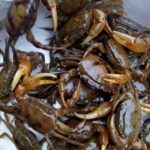## Unraveling the Enigmatic Eel-like Fish of Vietnam: A Culinary Adventure
While the two fish may appear similar, there are distinct differences between the liĉh and the lươn. In terms of size, adult lươn typically measure between 40-80cm in length and weigh in at 180-800g, while the liĉh is significantly smaller, with the largest barely reaching the size of a pinky finger, spanning just 20-30cm. Notably, the liĉh has a rounder body, a flatter and more developed tail, and more prominent eyes and nose. One of the most important distinctions is their habitat: lươn inhabit freshwater environments, whereas liĉh thrive in brackish waters.
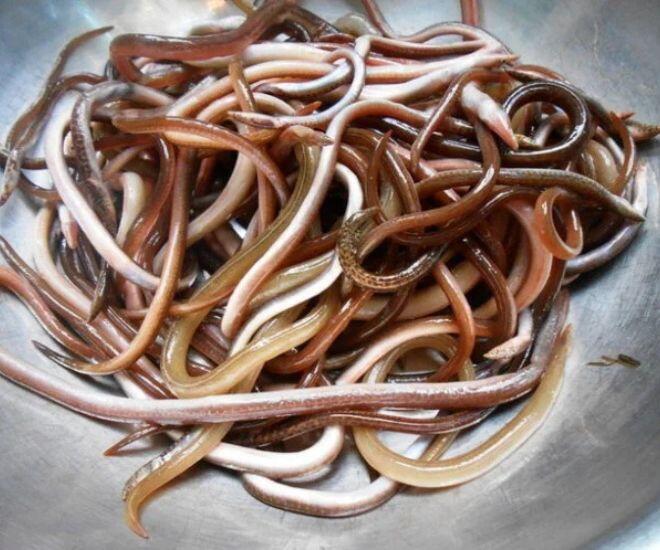
The liĉh comes in various species, primarily distinguished by their skin color. The liĉh cát, or sand liĉh, has skin that blends seamlessly with the color of the sand, providing effective camouflage. The most striking variety is the liĉh huyết đỏ, or red blood liĉh, with its bright red skin resembling fresh blood. This variety is considered the richest and most delicious in terms of flavor and fat content. Occasionally, larger liĉh, nicknamed “old liĉh,” are caught, measuring slightly longer than an adult’s thumb.
Liĉh fishing requires specialized techniques and tools due to their solitary nature and preference for burrowing in sand. Fishers typically use a scythe-shaped rake, digging about 20cm deep into the sand to trap the liĉh in the narrow gaps of the rake. Once caught, the fisher must quickly twist the rake upward before lifting it out of the water to prevent the liĉh from escaping. Another method involves waiting for the tide to recede, spotting small, round holes the size of a chopstick tip on the sand—these are liĉh burrows. Digging about 20cm deep into these holes allows fishers to capture the elusive liĉh.
While liĉh can be caught year-round, the tastiest and most abundant season coincides with the flood season. When heavy rains cause upstream flooding, the liĉh often leave their burrows and float to the water’s surface. This is when locals can easily scoop them up with nets, filling large baskets with this prized catch, which also provides a significant economic boost to the region.
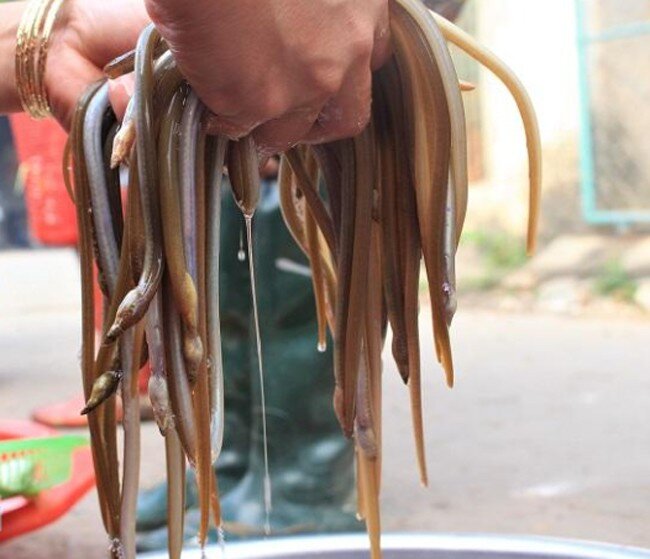
In the past, the liĉh river fish was not widely known beyond the local community, mainly featuring in homely meals. However, in recent years, it has gained recognition as a sought-after delicacy, appearing more frequently in local markets and seafood shops. With a price tag of approximately 180,000 VND per kilogram, the liĉh offers not only a nutritious meal but also embodies the culinary essence of this region. The prime season for enjoying liĉh is at the onset of the flood season, when the first nutrient-rich floodwaters bring forth liĉh measuring 30-40cm in length, golden in color, and plump with tender, flavorful meat, even down to their soft bones.
The culinary value of liĉh extends beyond its unique flavor to its versatility in a range of nutritious and delectable dishes. From this humble fish, creative cooks have crafted mouthwatering specialties such as măng xào liĉh (bamboo shoots stir-fried with liĉh), liĉh xào cà (liĉh stir-fried with eggplant), cháo liĉh (liĉh porridge), liĉh nấu canh chua (liĉh sour soup), and liĉh om nghệ (turmeric-braised liĉh), each dish boasting its own distinct character.
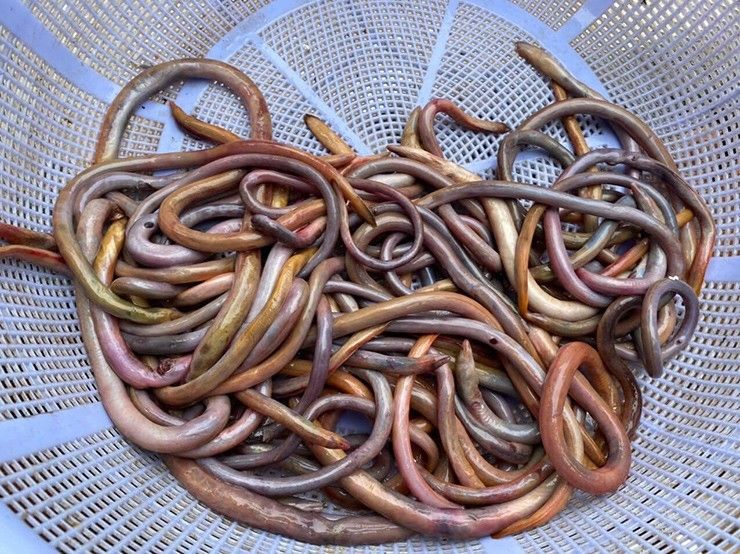
Among the myriad of liĉh dishes, the cháo liĉh (liĉh porridge) holds a special place in the hearts and bellies of locals. To prepare this comforting dish, the liĉh is cleaned, steamed until tender, and then carefully deboned and beheaded. The liĉh meat is marinated with a flavorful blend of salt, seasoning powder, fish sauce, MSG, onion, garlic, turmeric, fresh chili slices, and pepper powder for about fifteen minutes.
Next, the marinated liĉh meat is sautéed in peanut oil until fragrant, simmered over low heat for about ten minutes to infuse the flavors, and then combined with cooked rice porridge. The mixture is boiled for an additional five minutes to allow the porridge to absorb the sweet, savory essence of the liĉh. Just before serving, a sprinkling of chopped scallions adds a fresh touch to the golden-hued porridge.
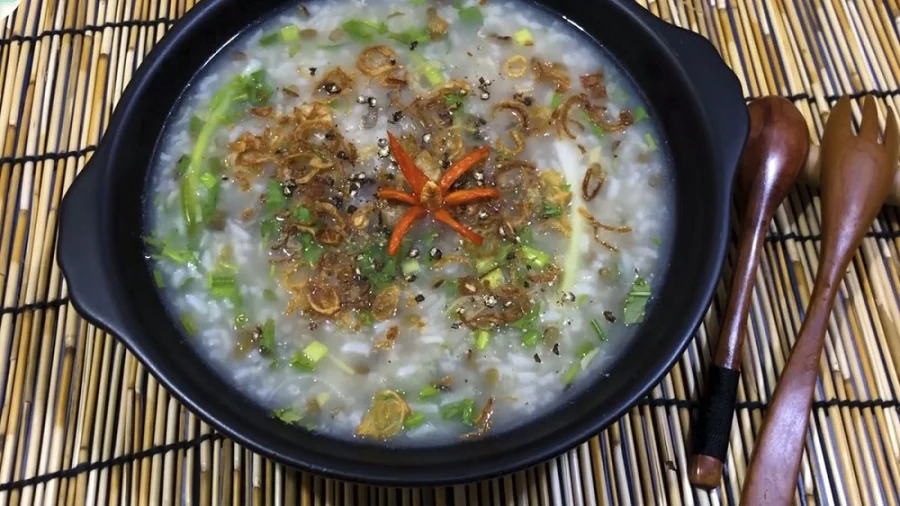
A well-crafted bowl of cháo liĉh presents a layer of golden oil from the turmeric, the fragrance of scallions, the warmth of pepper and aged ginger, and the signature sweetness and richness of the liĉh meat. This dish is best savored hot, with each mouthful releasing an explosion of flavors. It is especially recommended for those recovering from illness, as it is believed to aid in restoring one’s health. Folk wisdom also attributes cháo liĉh with the ability to treat stunted growth and malnutrition in children.
The allure of the liĉh river fish lies not only in its taste but also in its ability to provide a cornucopia of nutrition without relying heavily on additional spices or ingredients. With just a handful of liĉh, homemakers can create a nourishing soup for the family or a delectable appetizer to unwind after a long day of work. The liĉh river fish, despite its humble origins, stands as a testament to the richness and subtlety of Vietnam’s regional cuisine, a natural delicacy that nourishes both body and soul.
The Ultimate Guide to Cooking Crab Soup: A Delicious, Fragrant, and Crystal-Clear Broth
“Canh cua đồng is a delicious and popular Vietnamese dish, especially during the summer months. But not everyone knows the secret to making it taste truly exceptional. With the right ingredients and techniques, you can elevate this humble dish into a culinary masterpiece. Imagine impressing your family and friends with your unique and mouthwatering version of this traditional favorite. Stay tuned as we reveal the ultimate guide to mastering the art of cooking Canh cua đồng.”
From Weeds to “Liver-Cooling Delicacy”: Still Sold Out in the City at 75,000 VND per kg
“Once dismissed as a mere weed, this plant is now a sought-after delicacy in urban areas. With its unique bitter-sweet taste, the ‘Rau Cu Khoi’ vegetable is not only delicious but also packed with nutrients. A true gift that keeps on giving, it can be harvested year-round with just a single planting.”


























